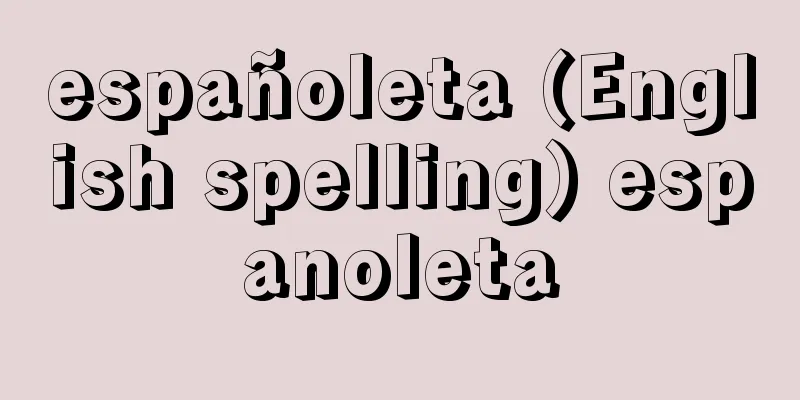Rokuyo - Rokuyo

|
Also called Rokki. Notes on the calendar. They refer to Sensho, Tomobiki, Senpu, Butsumetsu, Taian, and Shakku. When they were introduced from China in the 14th century, they were called Taian, Ryuren, Sokuki, Shakku, Shouki, and Kubo, but the names and order changed several times after that, and it is said that they settled into their current form around the Tenpo era (1830-1844). It was around this time that they became a common practice. Even today, Taian is chosen for weddings to avoid Butsumetsu, and Tomobiki is avoided for funerals, so the tradition is still deeply rooted. Originally, it was a fortune-telling of the time of day, with Sensho being bad luck in the afternoon, Tomobiki being bad luck during the day, Sensho being very lucky in the afternoon, Butsumetsu being bad luck for everything, Taian being good luck for everything, and Shakko being good luck only at noon. The Rokuyo are assigned to the calendar days (old calendar) as follows: January 1st, July 1st, Sensho February 1st, August 1st, Tomobiki March 1st, September 1st, Sensho April 1st, October 1st, Butsumetsu May 1st, November 1st, Taian June 1st, December 1st, Shakko As mentioned above, January 1st in the lunar calendar is always Sensho, the 2nd is Tomobiki, and the 3rd is Sensho, and the following February 1st is reassigned as Tomobiki. March 1st in the lunar calendar is always Sensho, April 1st is Butsumetsu, and May 1st is Taian, which is why it is considered a superstition. [Yuko Yoshino] [Reference items] | | | | | |Source: Shogakukan Encyclopedia Nipponica About Encyclopedia Nipponica Information | Legend |
|
六輝(ろっき)ともいう。暦日の注。先勝(せんしょう)、友引(ともびき)、先負(せんぷ)、仏滅(ぶつめつ)、大安(たいあん)、赤口(しゃっく)のこと。14世紀に中国から伝えられた当時は、大安、留連(りゅうれん)、速喜(そくき)、赤口、将吉(しょうきつ)、空亡(くうぼう)といったが、その後、名称、順序ともに幾度か変わり、いまの形に落ち着いたのは天保(てんぽう)(1830~1844)のころという。一般に行われるようになったのもこのころからである。現在も婚礼には仏滅を避けて大安が選ばれ、葬式には友引が忌まれるなど、根強く生きている。本来は時刻の吉凶の占いで、先勝は午後は凶、友引は昼凶、先負は午後大吉、仏滅はすべてに凶で、大安はすべてに吉、赤口は正午のみ吉、とされる。六曜は暦日(旧暦)に次のように配当される。 正月1日 7月1日 先勝 [吉野裕子] [参照項目] | | | | | |出典 小学館 日本大百科全書(ニッポニカ)日本大百科全書(ニッポニカ)について 情報 | 凡例 |
Recommend
Utafu - Utafu
...Since the early modern period, there had been ...
Intercropping - Kansaku
A type of mixed cropping in which one crop is cult...
Interferogram
…Since δ is expressed as 2π⊿/λ using the optical ...
Tamamatsu Misao
A pro-kingdom scholar from the end of the Edo per...
Conversation piece
A term of art history used mainly in Britain to re...
Dehrā Dun (English spelling)
It is the capital of the district of the same name...
Brewed alcohol - Jyozoshu
A general term for alcoholic beverages made by fe...
Balfour Declaration
On November 2, 1917, British Foreign Secretary Ba...
Smetona, A. (English spelling) SmetonaA
...The government, which made Kaunas its provisio...
Pati
…These scriptures are said to have been preached ...
Law Concerning Corneal and Kidney Transplants - Law Concerning Corneal and Kidney Transplants
...The crucial issue of whether or not those who ...
International commodity agreement
An intergovernmental agreement to promote interna...
Mount Ichinokura - Mount Ichinokura
...It is located where the ridgeline that forms t...
Carinthia - Karinthia
...A beautiful place blessed with mountains and l...
Ostyako-Samoed (English spelling)
…After the 1917 revolution, the name Samoyed came...









